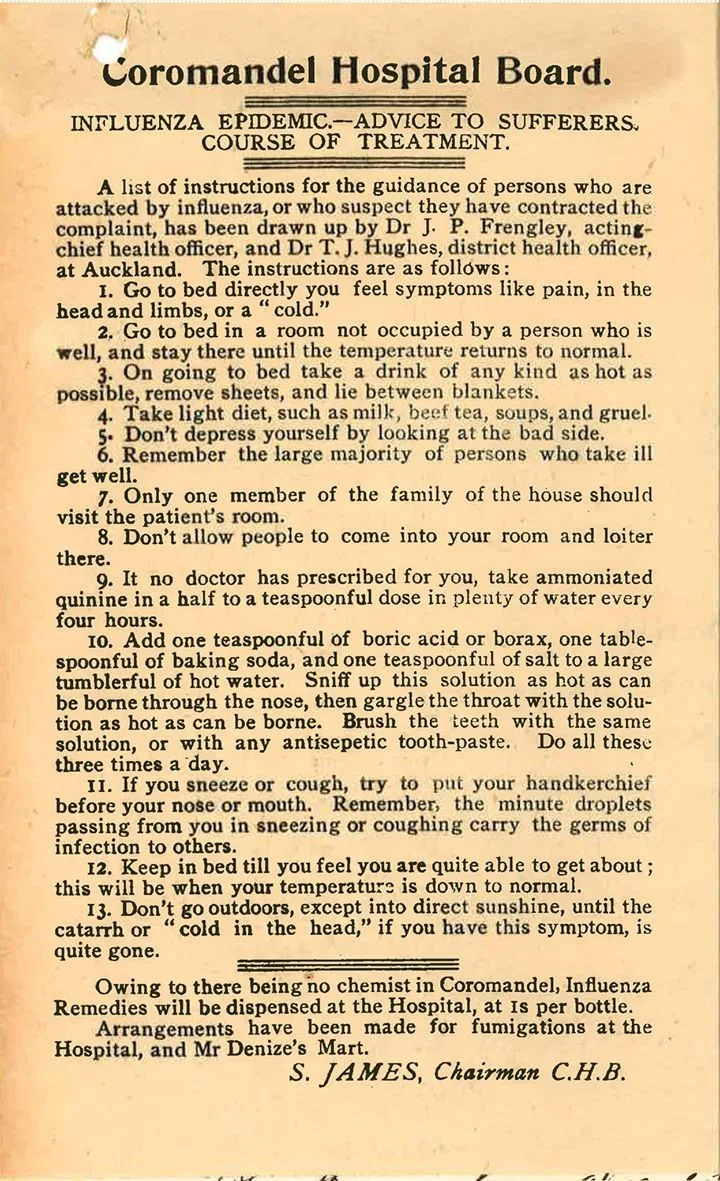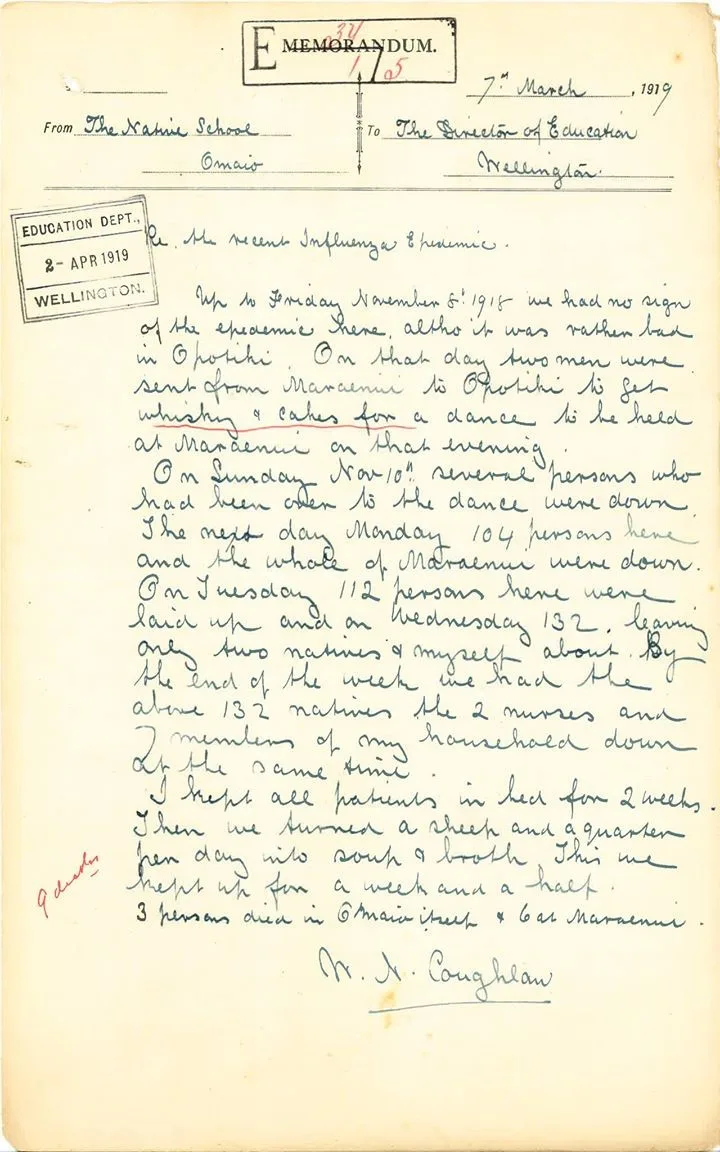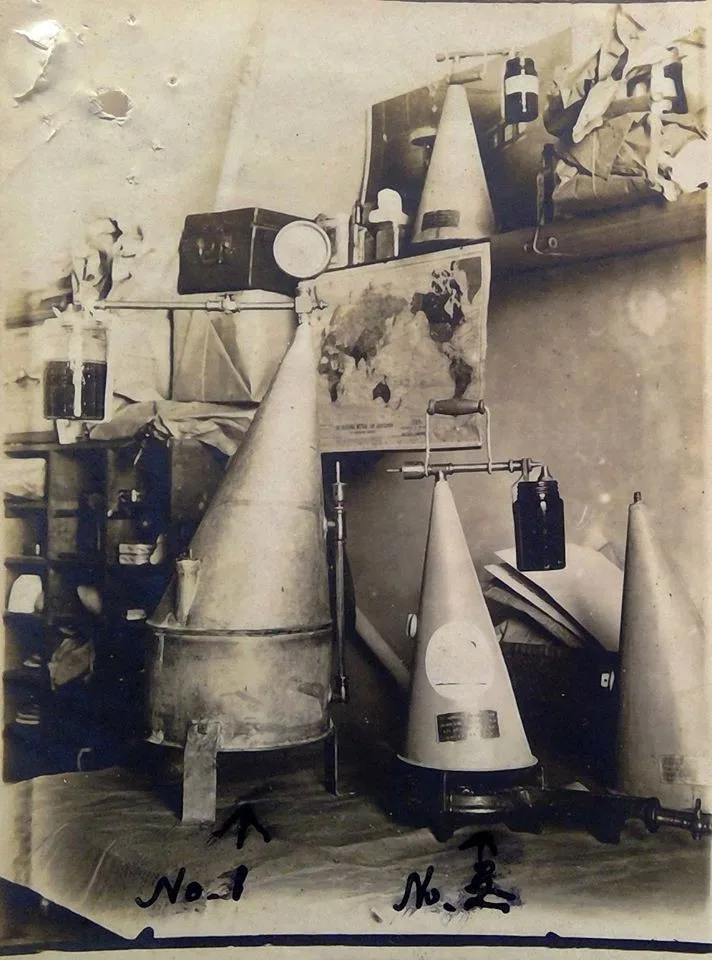The 1918 Influenza Outbreak in New Zealand
Ōmāio Marae sits nestled in the Bay of Plenty. At the beginning of the 20th Century, the area was home to a whaling and commercial farming community, all owned and managed by Te Whānau-ā-Apanui. As the Great War came to an end, everyone was eager to see their boys come home and families reunited. However, there was one passenger they were unaware of: H1N1. This novel strain of Influenza A was brought into New Zealand by returning military and medical forces, and the population was quickly overwhelmed.
The flu snuck into Ōmāio on November 8th, 1918 when “two men were sent from Maraenui to Ōpōtiki to get whiskey and cakes for a dance to be held at Maraenui that evening”. The virus had already swept through Ōpōtiki, so when the men went to gather supplies they exposed themselves, and their community, to a deadly new strain of flu.
By the following Sunday, several attendees of the dance at Maraenui had come down with the illness. A week later, 137 people had caught it, and had been placed in strict isolation in bed for two weeks. Nine people were lost to this outbreak, six in Maraenui itself, and three in the greater Ōmāio area. The illness shut down the community entirely, as seen in the notice and report put out regarding the closure of the local native school.
Life changed in Aotearoa during the outbreak of Influenza in 1918. Though the war was over, many public celebrations of armistice were delayed until the following year, with public officials scared of increasing the spread of flu. In Auckland, public buildings such as schools were turned into temporary hospitals and morgues, including the recently constructed Northcote Infants School, and the Ellerslie Racecourse grandstand. Everyone was involved in helping the infirm, including the boy scouts, who ran errands for patients such as collecting prescriptions. Communities worked together in the spirit of national cooperation that had blossomed during the war. By uniting en masse and listening to government restrictions, the outbreak waned by December in New Zealand, though it still resulted in around 9000 deaths.
The 1918 pandemic also wreaked havoc across the world. The flu vaccine was another 20 years away, and advice for care included recommendations to drink borax, a bleach-based substance which we now understand to be highly toxic and harmful to humans. Public inhalation stations were set up to enable people to breathe in Zinc Sulphate, a herbicide now known to harm and even kill humans. Other recommendations included taking quinine, a treatment which is useful in combating malaria, though we now know it can cause several adverse side effects.
It was undoubtedly a scary time to live through. It is not dissimilar to what we are experiencing now. However, unlike those in 1918 we are fortunate to have the benefit of modern science, with ample knowledge and resources to find a way to respond to this crisis. Let's learn from the mistakes of our past. Don’t break the bubble, even if it is for whiskey and cakes!
You can learn more about the 1918 influenza pandemic on NZ History and Te Ara.
References and further reading
- Maori Schools - Policy - Closure of native schools owing to influenza epidemic. BAAA 1001 A440 103/c44/1/323 R20390829
- Photograph of nurses, doctors and workers outside Northcote School - a temporary hospital during the influenza epidemic [Incorrectly labelled as Newmarket School]. AGGB 25456 A1788 1/i R25046919
- Influenza - inhalation. BAAK 19836 A49 83/h156/16 R6901654


![Photograph of nurses, doctors and workers outside Northcote School - a temporary hospital during the influenza epidemic [Incorrectly labelled as Newmarket School]](http://images.ctfassets.net/etfoy87fj9he/3B4AvK9e36jkatKWoLiRcb/84e4133cb274fbda25cecd640fb401b8/flu_3.jpg?w=&h=&fm=webp&fit=fill&f=faces&q=75)
